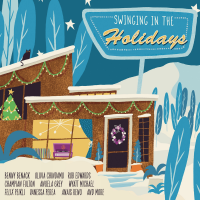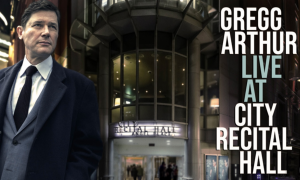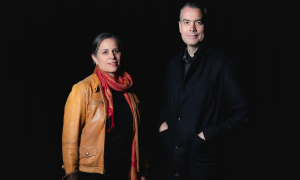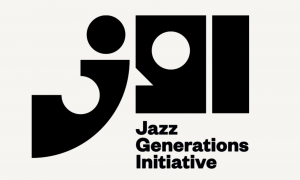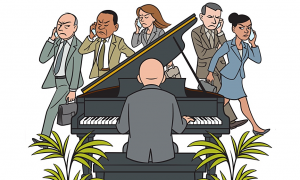IT IS NOW ALMOST A YEAR SINCE Wendy and Lucy played in Cannes — not a watershed moment in the history of cinema, perhaps, but a quiet harbinger. Kelly Reichardt’s third feature, about the struggles of a young woman and her dog stranded in an Oregon town en route to Alaska, was certainly among the more admired films in a strong festival, where it showed out of competition. But by the time it opened in New York last December, the movie, a modest, quiet, 80-minute study in loneliness and desperation, seemed like something more — not so much a premonition of hard times ahead as a confirmation that they had arrived.
Wendy and Lucy, with Michelle Williams in one title role (the other belonged to Reichardt’s dog), had a successful art-house run and found its way onto many critics’ year-end best-of lists (including mine). There was some talk of an Oscar nomination for Williams, who was so believably ordinary in her look and so rigorously un-actressy in her manner that you could easily forget her celebrity. But Wendy and Lucy, released by Oscilloscope Laboratories, a small and ambitious new distributor started by Adam Yauch, a member of the Beastie Boys, would have looked a little awkward alongside the other Academy Award nominees. It’s true that the big winner, Slumdog Millionaire,concerns itself with poverty and disenfranchisement, but it also celebrates, both in its story and in its exuberant, sentimental spirit, the magical power of popular culture to conquer misery, to make dreams come true. And the major function of Oscar night is to affirm that gauzy, enchanting notion.
The world of Wendy and Lucy offers little in the way of enchantment but rather a different, more austere kind of beauty. And while Wendy, at the end of the film, is poignantly, even devastatingly alone, the film itself now seems to be in good company. This spring, as the blockbuster machinery shifts gears from Watchmen to Wolverine, a handful of small movies from relatively young directors are setting out to expand, modestly but with notable seriousness, the scope of American filmmaking.
Goodbye Solo is the third feature directed by Ramin Bahrani, a New York-based filmmaker whose previous movies, Man Push Cart and Chop Shop, explored corners of the city rarely acknowledged by Hollywood. In the weeks following its debut at the end of this month, Bahrani’s movie will be joined by — and, given the beleaguered state of distribution for noncommercial movies these days, may have to compete with — Ryan Fleck and Anna Boden’s Sugar and So Yong Kim’s Treeless Mountain, each a second feature. All of these films — like Wendy and Lucy and Lance Hammer’s Ballast, which came out last fall — were highlights of the 2008 film-festival calendar, showing up at Cannes, Sundance, Toronto and elsewhere.
The lives they illuminate, of fictional characters most often played by nonactors from similar backgrounds, are not commonly depicted on screen: the Senegalese cabdriver in Winston-Salem, N.C., whose friendship with a customer is at the center of Goodbye Solo; the aspiring baseball player in Sugar who is transplanted from the Dominican Republic to rural Iowa; the African-American shopkeeper in a sparsely populated stretch of the Mississippi Delta whose grief is the dominant mood of Ballast; the two very young Korean girls abandoned by their mother in an unfamiliar provincial town in Treeless Mountain. But these people and their situations are nonetheless recognizable, familiar on a basic human level even if their particular predicaments are not. And if the kind of movie they inhabit is not entirely new — the common ancestor that established their species identity is a well-known Italian bicycle thief — their unassuming arrival on a few screens nonetheless seems vital, urgent and timely.
WHAT KIND OF MOVIES do we need now?
It’s a question that seems to arise almost automatically in times of crisis. It was repeatedly posed in the swirl of post-9/11 anxiety and confusion, and the consensus answer, at least among studio executives and the entertainment journalists who transcribe their insights, was that, in the wake of such unimaginable horror, we needed fantasy, comedy, heroism. In practice, the response turned out to be a little more complicated — some angry political documentaries and earnest wartime melodramas made it into movie theaters during the Bush years, and a lot of commercial spectacles arrived somber in mood and heavy with subtext— but such exceptions did little to dent the conventional wisdom.
And as a new set of worries and fears has crystallized in recent months — lost jobs and homes, corroded values and vanished credit — the dominant cultural oracles have come to pretty much the same conclusions. Remember the ’30s, when we danced through the Depression with Fred Astaire and Busby Berkeley and giggled amid the gloom with Lubitsch and the Marx Brothers? (Not many of us do, of course, which makes this kind of selective memory easier to promote.) Then as now, what we wanted most was to forget our troubles. In recession, as in war — and also, conveniently, in times of peace or prosperity — the movies we evidently need are the ones that offer us the possibility, however fanciful or temporary, of escape.
Maybe so. But what if, at least some of the time, we feel an urge to escape from escapism? For most of the past decade, magical thinking has been elevated from a diversion to an ideological principle. The benign faith that dreams will come true can be hard to distinguish from the more sinister seduction of believing in lies. To counter the tyranny of fantasy entrenched on Wall Street and in Washington as well as in Hollywood, it seems possible that engagement with the world as it is might reassert itself as an aesthetic strategy. Perhaps it would be worth considering that what we need from movies, in the face of a dismaying and confusing real world, is realism.










